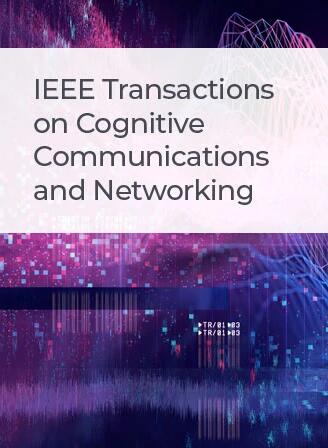采用非对称架构的 GAI 增强型稳健语义通信
IF 7
1区 计算机科学
Q1 TELECOMMUNICATIONS
IEEE Transactions on Cognitive Communications and Networking
Pub Date : 2024-12-19
DOI:10.1109/TCCN.2024.3520132
引用次数: 0
摘要
语义通信(SC)是突破香农范式的下一代通信架构,被认为是实现未来第六代无线网络和认知通信的关键技术。SC不是关注误码率,而是致力于从原始数据中提取抽象的语义信息,以提高特定任务的通信效率。然而,目前的SC系统大多依赖于基于卷积神经网络的对称架构,这不仅严重限制了网络的容量,而且导致编码器和解码器之间的高度耦合。此外,它在噪声参考方面也缺乏鲁棒性。生成式人工智能(GAI)的出现打破了这一瓶颈。在本文中,我们提出了一种基于GAI的非对称端到端SC架构,称为掩码联合源信道编码(M-JSCC)。在我们的模型中,编码器充当通用语义提取器,而解码器则针对特定任务进行定制。在模型训练过程中,我们引入了屏蔽机制,提高了M-JSCC提取语义信息的性能,增强了M-JSCC在各种信道条件下的鲁棒性。此外,它还赋予M-JSCC卓越的数据生成能力。得益于非对称架构,解码器不再依赖于编码器,这使得它可以根据特定的需求进行切换,以更好地适应不同的面向任务的场景。最后,综合实验证明了M-JSCC具有良好的语义理解能力和通信鲁棒性。本文章由计算机程序翻译,如有差异,请以英文原文为准。
GAI-Enhanced Robust Semantic Communication With Asymmetric Architecture
Semantic communication (SC), regarded as a next-generation communication architecture that breaks through the Shannon paradigm, is considered a key technology for realizing future sixth-generation wireless networks and cognitive communications. Instead of focusing on the bit error rate, SC is dedicated to extracting abstract semantic information from original data to enhance communication efficiency for specific tasks. However, current SC systems mostly rely on symmetric architectures based on convolutional neural networks, which not only severely limits the capacity of the network but also leads to a high degree of coupling between the encoder and decoder. Additionally, it also lacks robustness in noise reference. The emergence of generative artificial intelligence (GAI) breaks this bottleneck. In this paper, we propose an asymmetric end-to-end SC architecture based on GAI, named masked joint source-channel coding (M-JSCC). In our model, the encoder serves as a universal semantic extractor, while the decoder is tailored to specific tasks. During the model training, we introduce a masking mechanism that improves the performance of M-JSCC to extract semantic information and enhances the robustness under various channel conditions. Moreover, it also endows M-JSCC with remarkable data generation abilities. Benefiting from the asymmetric architecture, the decoder no longer depends on the encoder, which allows it to be switched according to the specific requirements to better adapt to different task-oriented scenarios. Finally, comprehensive experiments demonstrate the excellent semantic understanding and communication robustness of M-JSCC.
求助全文
通过发布文献求助,成功后即可免费获取论文全文。
去求助
来源期刊

IEEE Transactions on Cognitive Communications and Networking
Computer Science-Artificial Intelligence
CiteScore
15.50
自引率
7.00%
发文量
108
期刊介绍:
The IEEE Transactions on Cognitive Communications and Networking (TCCN) aims to publish high-quality manuscripts that push the boundaries of cognitive communications and networking research. Cognitive, in this context, refers to the application of perception, learning, reasoning, memory, and adaptive approaches in communication system design. The transactions welcome submissions that explore various aspects of cognitive communications and networks, focusing on innovative and holistic approaches to complex system design. Key topics covered include architecture, protocols, cross-layer design, and cognition cycle design for cognitive networks. Additionally, research on machine learning, artificial intelligence, end-to-end and distributed intelligence, software-defined networking, cognitive radios, spectrum sharing, and security and privacy issues in cognitive networks are of interest. The publication also encourages papers addressing novel services and applications enabled by these cognitive concepts.
 求助内容:
求助内容: 应助结果提醒方式:
应助结果提醒方式:


